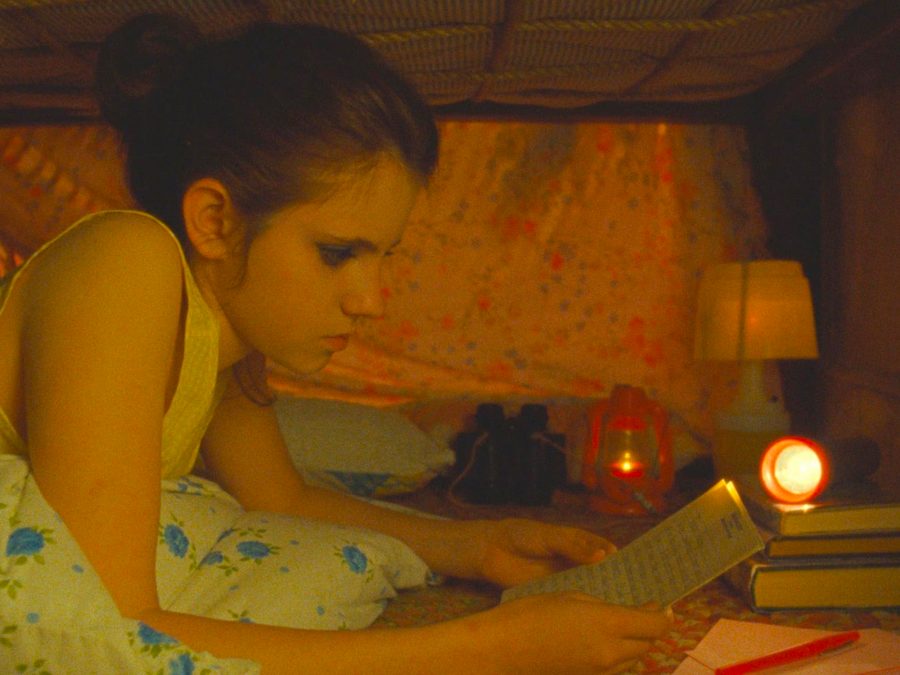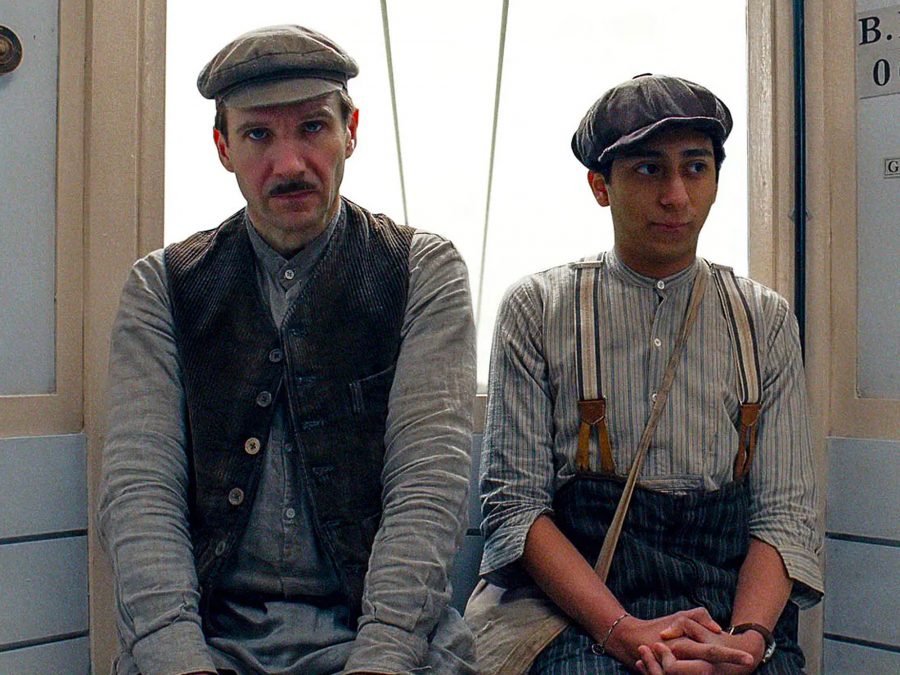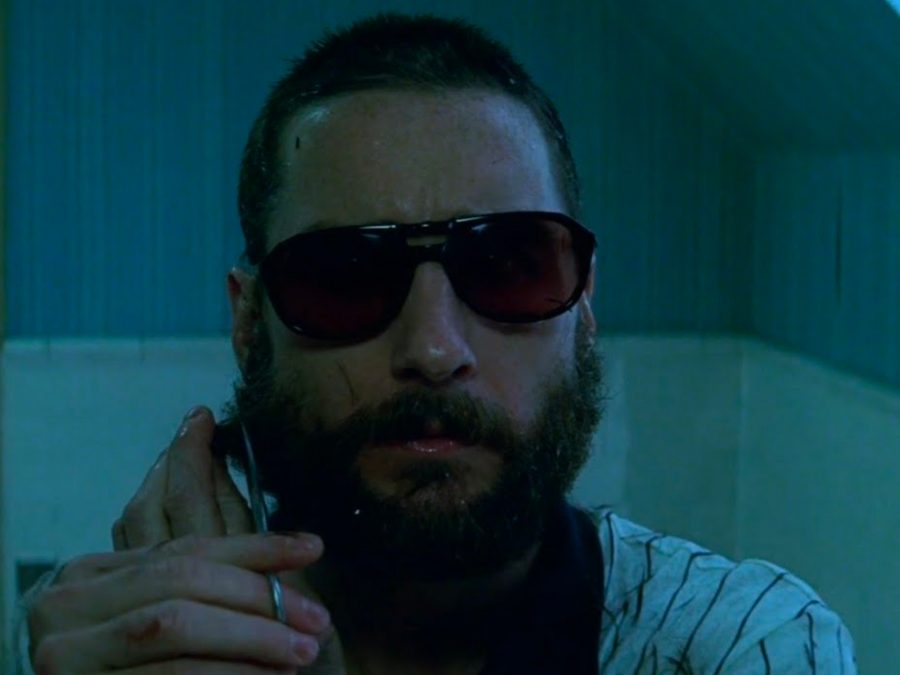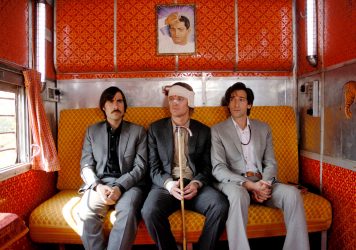
Sophie Monks Kaufman continues her deep dive into the neurodivergent coding of Wes Anderson's cinema in this far-reaching long read.
There is neurodivergent (ND) solace to be had within all of Anderson’s works – perhaps because you can take a scene at random and find a stratum of information encoded in the images, dialogue, performances, set decoration, editing, soundtrack and overall rhythm. This glut of harmoniously arranged creativity serves as a sensory stimulant, with every moment offering intense magnetism to a viewer otherwise subject to executive function lapses.
I had been slightly terrified about how Anderson would respond to a piece that seeks to map such a specific set of interpretations onto his work. I asked how he felt that this piece was being written. His response put paid to the terror and galloped off to a place where there is no stigma, only appreciative angles.
“How do I feel? You know, the interesting thing is people who identify as neurodivergent often have particular focus in their perception of things, a different way of processing information. I like the idea that there’s an audience who is, in a way, paying extra special attention and seeing the movie differently. Possibly seeing the movie more the way I see it, as a filmmaker, and also getting more out of it, a more careful focus. But the main thing is: what does that lead to? I hope and feel that it’s creating an emotional experience that’s different, because it’s an emotional experience that might be inspired by getting more of the details, pulling more of the thing in. I wonder if that makes sense and I wonder if that is true.”
It makes sense and I hope that it’s true.
While each frame in every film is the world in a grain of sand, there is, yet, one that stands out as the peak of ND-coded characters who (it could be argued) exist in older form as junior stargazers Woodrow and Dinah in Asteroid City. Looking back to Anderson’s 2012 film about juvenile love, Moonrise Kingdom, the two preteen protagonists exist uneasily with everyone except each other. 12-year-old Suzy (Kara Hayward), is volatile, prone to lashing out at her parents (with savage remarks), peers (by throwing scissors), and herself (by punching a mirror).

Orphaned cub scout Sam (Jared Gilman) is initially mocked and dismissed by his fellow scouts and remains focused on survival skills, such as orienteering, making fires and the art of escape. Suzy and Sam meet after he goes backstage and finds her dressed as a raven during a church production of Noye’s Fludde. Their subsequent letter-writing correspondence becomes a plan to run away together to a peaceful cove in New Penzance that the map calls Mile 3.25 Tidal Inlet. In the final scene of the movie, we see that Suzy, a bookworm with a poetic imagination, has rechristened it ‘Moonrise Kingdom’. To push poetic imagination a mite further, we could say that ‘Moonrise Kingdom’ symbolises a neurodivergent sanctuary where we can be unmasked and free.
Hayward’s performance is that of a tightly coiled spring whose desperate emotional state is masked by a distinct style, immaculate eye make-up and Sunday School shoes. While capable of sweetness when she feels safe, when this security is whipped away, rage and rawness return tenfold. There is an incredible scene that takes place after the runaways have been found and taken to separate homes. Suzy’s mother Mrs Bishop (Frances McDormand) is sponging down her daughter in a bathtub while being gently condescending. “We women are more emotional,” she says. “I hate you,” replies Suzy, a stone wall, but only moments later when talking about loving Sam, she is totally exposed, even if her mother does not register it, distracted as she is by the fact that Suzy has pierced her ears with fishhooks.
“These parental relationships are a form of negotiation where they’re trying to diagnose you. They’re trying to work out, ‘What’s wrong with you? Why is my child odd?’ ‘I’m not going to take what you’re saying seriously, because I know you’re weird,’” says Crawford, who sees Moonrise Kingdom through a very specific lens. “To me, it’s about two autistic children who find each other and they’re both autistic in different ways. Sam is sort of allowed to be – he’s allowed to be interested in scouting and to have his little obsessions, whereas Suzy isn’t. I think that’s really where gender difference manifests itself in childhood: who’s a freak and who’s not a freak. Wes Anderson is so good because you have socially awkward women. And that’s not something that we’re allowed to be. What I love about Suzy Bishop is that she doesn’t really care.”
Art is a Rorschach Test and neurodivergence is not a monolith. While Crawford sees autism in Suzy, I see emotional dysregulation, a symptom of executive dysfunction. Neuro-imaging has revealed that activity in the prefrontal cortex and amygdala (sites of the brain associated with control of daily tasks and regulating emotions) are altered in the ADHD brain. And while the clichéd image of ADHD is of a hyperactive boy who can’t sit still or concentrate, it can be the case with girls and women that hyperactivity manifests through an unstable mood. “They are often emotionally intense and reactive, even if they try to hide aspects of this response. They tend to become upset quite easily and ‘over-react’ to stress, feeling easily overwhelmed, hassled and wound up,” writes Dr Joanne Steer in the book ‘Understanding ADHD in Girls and Women’. I read this to Samantha Hiew, who says that she agrees but would add more context: “Emotional dysregulation always has a trigger, it is not something that bursts out of the blue. People might be more likely to be dysregulated, especially girls, if they feel rejected, or not accepted by their peers. And when that happens, it’s zero to 100, it is intense. And that’s because we feel more in our body – the brain of someone with ADHD typically feels, hears and senses before they think.”
Hiew deploys the term “amygdala hijack” for when we are so emotionally overwhelmed that nothing makes sense and we go into meltdown. “You could either melt down and blurt out in anger and then scream, or you can shut down and lose the ability to talk because you are so sensorily overloaded,” she says. The only recourse when this occurs is to take oneself or be gently taken to “a quiet room to slow down and regulate and breathe. Because it’s very hard to reverse things once it starts.”

Wes Anderson’s cinema is a controlled environment that calms my sensory overwhelm and makes me feel safe before stimulating a feeling of being alive, moved by the characters and in awe of a supportive universe whose organisational principles give their emotions a chance of making sense. Perhaps the most profound aspect of Anderson’s cinema, which produces a dopamine fiesta in my body, has to do with tonal scope. He holds the worst of his characters lightly with a worldly humour that swerves any judgement of their deeds. “Rudeness is merely an expression of fear. People fear they won’t get what they want. The most dreadful and unattractive person only needs to be loved, and they will open up like a flower,” M Gustave proselytises to his staff at The Grand Budapest Hotel, only to play this out, post-jailbreak, when he finds that protege and accomplice, Zero, failed in that he: could not find a safehouse, did not bring false whiskers or fake noses and, the final straw, forgot to bring any of his signature scent: L’air du panache. M Gustave delivers a deeply cruel rant and asks why Zero – an immigrant – bothered to come to Zubrowka. Instead of snapping back, Zero sorrowfully answers, “the war” and M Gustave sags, in a manner of a ND person, post-meltdown, when we realise that we have lost sight of the other and taken aim at a valued relationship.
Feelings are expressions of the release of chemicals in the brain; dopamine means anticipatory pleasure, serotonin and oxytocin mean a positive connection to someone else. On the other hand, stress triggers cortisol and brings on anxiety. ADHDrs are known to have reduced levels of dopamine (and norepinephrine), and a higher level of cortisol than those without ADHD and some of us are prone to quick fixes – not all of them healthy – in pursuit of feeling good again. Luckily for M Gustave, Zero instantly forgives him and their bond continues, leading to serotonin all round, including for the invested viewer. As Samantha Hiew says, “Creativity is the most sustainable dopaminergic pleasure and that can come from any source – appreciating art is a form of creativity.”
M Gustave delivers a passionate apology to Zero that is full of self-recriminations building to the sincere observation that, “This is disgraceful and it’s below the standards of The Grand Budapest…I apologise on behalf of the hotel.” The fact that a character’s misery and the hilarity of their expressiveness is contained, simultaneously, in the same moment is familiar to the self-aware neurodivergent, for it feels ridiculous to be routinely felled by tiny and predictable complications. This duality harkens back to the Charlie Chaplin line, “Life is a tragedy in close-up and a comedy in long shot.” When I put this to Jason Schwartzman he says, “I live for that” and tells me an anecdote about watching Rushmore with an audience for the first time:
“They laughed in a couple of places I hadn’t expected. At first I thought that they were laughing at me, at how bad I was. I was like, ‘Why are they laughing? That’s not supposed to be funny’. I was like, ‘God, that’s not funny. That’s supposed to be so serious!’ And then I realised, ‘Oh, that IS funny because it means so much to him [Max]’. Conversely, on Asteroid City, I remember seeing it and people weren’t laughing in places. I realised, ‘Ah, they’re not not laughing because it’s not funny, they’re not laughing because it’s sad to them.’ It really is how you choose to land. One thing that I really love about working with Wes is all these things are in play, yet they don’t have to be so defined. Sometimes I’ll say to Wes, ‘Do you think it’s this, or is it this?’ and he’s like, ‘Both?'”
The orderly aesthetic of the Andersonverse is in support of this “bothness”. His stylised visual signature – so ripe for shallow parodies – is a way of not sacrificing any detail that could enhance story or character or mood. “I make them [the films] orderly, in a way, to try to efficiently communicate information, to get things across as clearly as we can,” says Anderson, “Because often I feel like I’m trying to put a lot of information in one frame or one sequence and I want to try to figure out how to do it so it really all is clear.”

As part of this drive for clarity, Anderson does something autism-friendly by familiarising us with a location before the action begins. An introduction to ‘Asteroid City’ involves a camera tour around every key site – a 12-seat luncheonette, a motel, an advert displaying a meteorite crater, a ramp leading nowhere – each decked out in soothing colours and clearly labelled in an inviting font. Only then does Augie’s car whizz into view. The framing device of the film as a play means that we witness the miracle of Edward Norton’s playwright Conrad Earp describing his ‘Asteroid City’, then, hey presto, it appears and the light of the desert sun is neither warm nor cool but always clean and, above all, unforgiving. The effect of an imagination spitting out a world fully formed is not just a neat visual trick, it is extremely moving to a ND person who struggles to communicate the basics. Not only does Anderson have a unique imagination, he has the wherewithal to communicate it to the army of sensitive creatives who have built it from scratch. This feat is awesome and melancholy, as it brings home how far our lives are from this sophisticated dream world.
“I like the level of control, because the real world so often feels out of control,” concurs Crawford, “Things aren’t managed, things aren’t symmetrical. Things aren’t organised. That can be really distressing. I’ve learned to cope more as I’ve gotten older. We acclimatise. If something’s not at a perfect 90-degree angle, it’s not the end of the world, but it can feel like it. Whereas in a Wes Anderson film, it would be the end of the world. It would never happen. It’s not allowed to happen. Because if it did happen, it wouldn’t be on camera. It wouldn’t be on film. It’s really special that when you watch a Wes Anderson film you know that nothing’s going to be out of place. I know that I’m going to be in a safe space when I enter.”
Hiew traces this sensory sensitivity back to its source, “There is a part of the human brain where people receive sensory input from their environment, whether music or birds singing, or what you see in bright daylight or darkness, what you feel, what you taste?” These are all feelings that are heightened in neurodivergence. She continues, “We’ve seen brain scans for autistic children early on in infancy, where they are going through such a huge amount of brain development and the connectivity is so sophisticated. That’s why a lot of autistic kids are known to be quite clever, but also prone to sensory meltdowns because the amount of information that they get from the environment is so much more than a brain without this sensory receptivity.”
Extreme sensitivity isn’t all bad, because when the stars align you feel more fucking alive than anyone has ever been. Perhaps the deepest source of pleasure (never to be taken for granted by an ND person) is the feeling of being connected to another person, directly or through their art. Our culture has conceived of the word ‘parasocial’ to describe one-sided relationships with parties (often famous ones) who don’t know that we exist, however this does not describe the life force that can flow between art and its appreciators, sparking hope in places where despair has dominion and reconnecting us with something sacred that had drifted out of view.
Hiew points out that, “Those of us who have masked so much in our lives don’t know which of our identities are us. Mindfulness is good at helping neurodivergents because it can enable us to come back into the present, to appreciate what we have.” She argues that the cinema of Wes Anderson is so absorbing that it induces a state of mindfulness without us even having to try. “When you watch something, you’re having a 3D experience with the sound and visuals and the feeling. It almost forces your brain to notice the colours, because he has this amazing way of creating a set that puts you in tune with what is happening with you. It makes you more mindful without knowing it.”
Nothing external – not the most loving person, not the most profound work of art, not sex, not drugs, not rock ‘n’ roll – can be a permanent panacea for feeling out of tune with wider society. It’s more that in a moment of mindfulness (or a feature film’s worth of them) we experience a glimmer of the rapture available to people with our wiring and, powered by that flash of clarity, can choose to prioritise the past-times that speak to our most authentic selves.

There are films that harness some aspect of what Anderson does in terms of being ND friendly: the pastel confection of Jacques Demy’s The Umbrellas of Cherbourg; the swooning Technicolor of Douglas Sirk’s body of work; Guillermo del Toro’s immersive nightmares; the saturated 1950s colours in Todd Haynes’ Carol and the playful cinematic grammar of his forthcoming May December. In short, every filmmaker that plays with “bothness”, crafting a fantasy brocaded with recognisable details that offers both escapism and coded meaning.
More thrilling, still, are films that use switches in form to illustrate internal shifts for their characters. In Darius Marder’s Sound of Metal, the sound is turned down to convey the overwhelm of Riz Ahmed losing his hearing; in Coralie Fargeat’s Revenge, Matilda Lutz is shot like a music-video Lolita, replicating the perspective of her rapists until she becomes the vengeful protagonist and the camera rebirths her as a hunter. Gary Ross’s Pleasantville is all black and white until sex and culture causes colour to enter the frame. Xavier Dolan’s Mommy has an aspect-ratio shift that lands as euphoric, fleeting freedom. These types of choices bring home the fact that being in the world doesn’t always hit in the same way. This is true for everyone, but in my neurodivergent experience, it is extremely pronounced. Sometimes I feel locked out of society – my struggle to communicate siloing me off into solitude – and sometimes I feel like a glorious part of it all. What makes the difference most often, most always, is to do with individual people and whether they show up.
This is why it all comes down to Richie Tenenbaum and the way his despair and survival is framed by Wes Anderson. “It was very quiet and very private, the way we shot it,” says Anderson, “We did it very late in the movie, in part because Luke Wilson has a beard and the hair and it all gets cut off, so you have to shoot it at the right place in the story.” They were filming in an abandoned mansion in Yonkers, “Luke was very ready. The people working together were so bonded and connected by then. Probably, the mental health of Luke and Bill Murray was starting to take on what was going on with their characters.”

Through the script, Anderson throws in a comrade that Richie cannot see, but we can. After he has completed the scissor stage of beard-cutting, smoothed foam onto his face and shaved one neat line off his facial hair, Richie says to the mirror, “I’m going to kill myself tomorrow”, even though the plan is to do so right away. It’s a line originally spoken by the actor Maurice Ronet in Louis Malle’s 1963 despair poem, The Fire Within. The effect is that a solitary misfit has the ballast of cinema history tying him to another. There are bonds closer to home, too. A perspective flip occurs immediately after Dudley finds Richie collapsed in the bathroom and releases a scream, silent beneath the soundtrack of Elliot Smith’s Needle in the Hay. Now, Tenenbaum after Tenenbaum receives news of his attempt and dashes to the hospital, like The Society of the Crossed Keys distilled to pure urgency. It’s clear that Richie cannot grasp the extent of his connectedness to other people. He is an avatar for everyone whose sense of alienation blocks an awareness of the love in their life.
A sense of alienation can arise from lambasting yourself internally for not being “normal” or “straightforward” and a vicious spiral can arise where the freakier one feels, the more one self-isolates. It can feel dangerous to reach out from this place of heightened sensitivity in the knowledge that even an unintended slight can cause us to slide deeper into the well. Conversely, this is also a yawningly receptive state for kindness, acceptance and the wisdom that says: this loneliness is very human. Wes Anderson’s cinema is populated by idiosyncratic lost souls who somehow cling on to their place within blood and/or found families. The qualities that make them miserable Anderson, their creator, celebrates as part of their humanity. To normalise the pain of existence and to tell stories where it is the status quo – just standard-issue emotional furniture – is to give audiences permission to feel their feelings cleanly without the additional burden of judgement on top. The Godfather star, scion of the Coppola dynasty and mother of Jason Schwartzman, Talia Shire, has something to say on this subject, via her son. Over to Schwartzman:
“When my dad died when I was younger, my mom said to me, ‘There’s no wrong way to feel.’ I didn’t know what that meant. Later, I remember looking around and everyone was crying but I wasn’t crying. Then I was like, ‘Am I a bad person because I’m not crying?’ So, you’re judging yourself for how you feel, rather than just feeling, right? To me, that’s what Asteroid City is about. In many ways it’s like, ‘Just keep feeling it’. Don’t try to think about it too much. It’s like grief, it’s a process. With Wes, there is no wrong way to feel.”

Little White Lies is committed to championing great movies and the talented people who make them.
Published 27 Sep 2023

The Whitmans, the Tenenbaums and others lifted my spirits at a time when it seemed nothing could.

The maestro behind Asteroid City leaves a voice note for LWLies, reflecting on naming conventions, sci-fi films, and working with his best friends.

Through conversations with psychologists, neurodivergent friends, Jason Schwartzman and the man himself, Sophie Monks Kaufman investigates the meticulous worlds of Wes Anderson and their potent emotional frequencies.